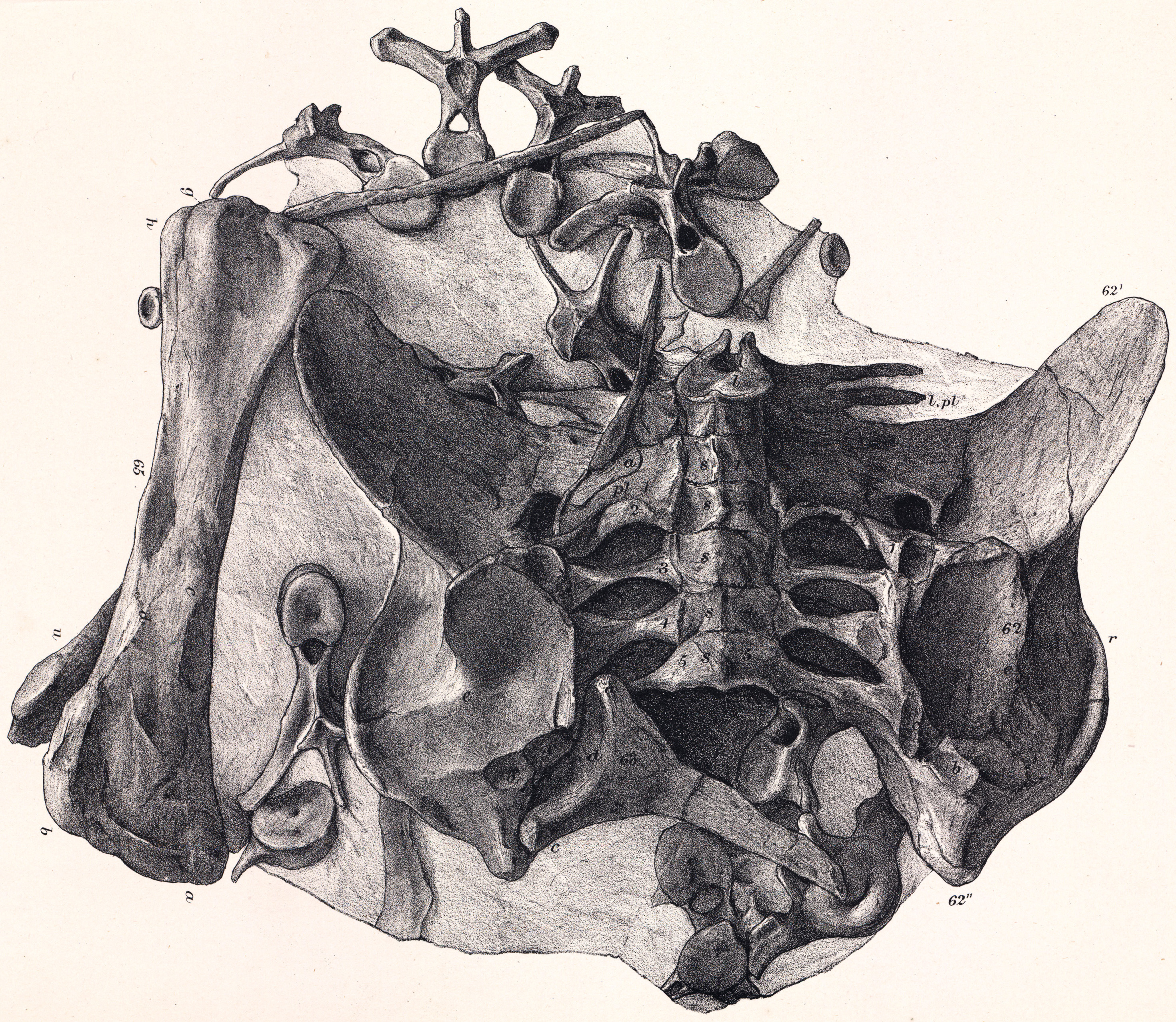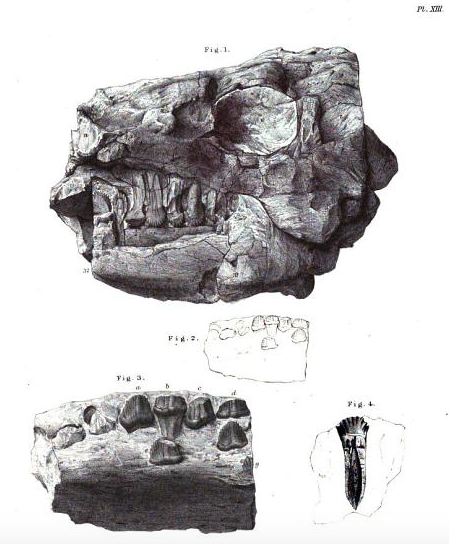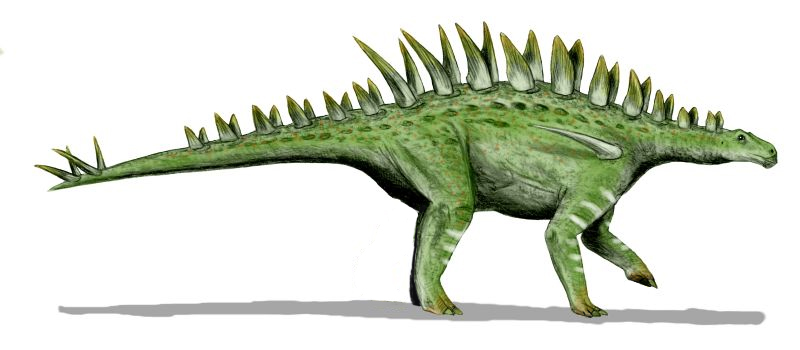|
Stegosaurinae
Stegosauridae is a family of thyreophoran dinosaurs (armoured dinosaurs) within the suborder Stegosauria. The clade is defined as all species of dinosaurs more closely related to ''Stegosaurus'' than '' Huayangosaurus''.David B. Weishampel, Peter Dodson, Halszka Osmólska. The ''Dinosauria'' (2nd ed.). Berkeley: University of California Press. The name ‘Stegosauridae’ is thus a stem-based name taken from the well-represented genus – ''Stegosaurus'' (meaning ‘roofed lizard’). Fossil evidence of stegosaurids, dating from the Middle Jurassic through the Early Cretaceous, have been recovered from North America, Eurasia and Africa. The clade Stegosauridae is composed of the genera ''Stegosaurus'', '' Dacentrurus'', '' Miragaia'', '' Loricatosaurus'', and '' Kentrosaurus'', with the last considered to be at the base of the clade. The stegosaurids like all other stegosaurians were quadrupedal herbivores that exhibited the characteristic stegosaurian dorsal dermal plates. These ... [...More Info...] [...Related Items...] OR: [Wikipedia] [Google] [Baidu] |
Wuerhosaurus
''Wuerhosaurus'' is a genus of stegosaurid dinosaur from the Early Cretaceous Period of western China and Inner Mongolia. As such, it was one of the last genera of stegosaurians known to have existed, since most others lived in the late Jurassic. Discovery and species ''Wuerhosaurus homheni'' is the type species, described by Dong Zhiming in 1973 from the Tugulu Group in Xinjiang, western China. The generic name is derived from the city of Wuerho. Three separate localities in the Wuerho Valley were discovered to contain material from the new stegosaur: , 64043 and 64045. The remains consisted of the holotype, Institute of Vertebrate Paleontology and Paleoanthropology (IVPP) V.4006, a skull-less fragmentary skeleton, and the paratype IVPP V.4007. Holotype material includes a mostly complete pelvis and sacrum lacking the ischium, the first caudal vertebrae, two dorsal vertebrae, a scapulocoracoid, humerus and phalanx, as well as two dermal plates. Three posterior caudal ver ... [...More Info...] [...Related Items...] OR: [Wikipedia] [Google] [Baidu] |
Dacentrurus
''Dacentrurus'' (meaning "tail full of points"), originally known as ''Omosaurus'', is a genus of stegosaurian dinosaur from the Late Jurassic to Early Cretaceous (154 - 140 mya) of Europe. Its type species, ''Omosaurus armatus'', was named in 1875, based on a skeleton found in a clay pit in the Kimmeridge Clay in Swindon, England. In 1902 the genus was renamed ''Dacentrurus'' because the name ''Omosaurus'' had already been used for a crocodylian. After 1875, half a dozen other species would be named but perhaps only ''Dacentrurus armatus'' is valid. Finds of this animal have been limited and much of its appearance is uncertain. It was a heavily built quadrupedal herbivore, adorned with plates and spikes, reaching in length and in body mass. Discovery and species On 23 May 1874, James Shopland of the Swindon Brick and Tyle Company reported to Professor Richard Owen that their clay pit, the Swindon Great Quarry below Old Swindon Hill at Swindon in Wiltshire, had again produc ... [...More Info...] [...Related Items...] OR: [Wikipedia] [Google] [Baidu] |
Tuojiangosaurus
''Tuojiangosaurus'' (meaning "Tuo River lizard") is a genus of herbivorous stegosaurian dinosaur from the Late Jurassic Period, recovered from the Upper Shaximiao Formation of what is now Sichuan Province in China. Description ''Tuojiangosaurus'' was a large stegosaur, reaching in length and in body mass. Physically similar to the North American ''Stegosaurus'', ''Tuojiangosaurus'' is the best understood of the Chinese stegosaurs. In 1977, Dong provided a diagnosis but this largely consisted of traits shared with other stegosaurus. In 1990, Peter Malcolm Galton pointed out an autapomorphy: the spines of the vertebrae of the tail base possess spines with bony skirts running from their front to the sides. ''Tuojiangosaurus'' has the typical narrow and low head, bulky body, and low teeth of other stegosaurids. The limbs, especially the arms, are rather short.Paul, G.S., 2010, ''The Princeton Field Guide to Dinosaurs'', Princeton University Press p. 221 There are at least twe ... [...More Info...] [...Related Items...] OR: [Wikipedia] [Google] [Baidu] |
Paranthodon
''Paranthodon'' ( ) is a genus of stegosaurian dinosaur that lived in what is now South Africa during the Early Cretaceous, between 139 and 131 million years ago. Discovered in 1845, it was one of the first stegosaurians found. Its only remains, a partial skull, isolated teeth, and fragments of vertebrae, were found in the Kirkwood Formation. British paleontologist Richard Owen initially identified the fragments as those of the pareiasaur '' Anthodon''. After remaining untouched for years in the British Museum of Natural History, the partial skull was identified by South African paleontologist Robert Broom as belonging to a different genus; he named the specimen ''Palaeoscincus africanus''. Several years later, Hungarian paleontologist Franz Nopcsa, unaware of Broom's new name, similarly concluded that it represented a new taxon, and named it ''Paranthodon owenii''. Since Nopcsa's species name was assigned after Broom's, and Broom did not assign a new genus, both names are n ... [...More Info...] [...Related Items...] OR: [Wikipedia] [Google] [Baidu] |
North America
North America is a continent in the Northern Hemisphere and almost entirely within the Western Hemisphere. It is bordered to the north by the Arctic Ocean, to the east by the Atlantic Ocean, to the southeast by South America and the Caribbean Sea, and to the west and south by the Pacific Ocean. Because it is on the North American Plate, North American Tectonic Plate, Greenland is included as a part of North America geographically. North America covers an area of about , about 16.5% of Earth's land area and about 4.8% of its total surface. North America is the third-largest continent by area, following Asia and Africa, and the list of continents and continental subregions by population, fourth by population after Asia, Africa, and Europe. In 2013, its population was estimated at nearly 579 million people in List of sovereign states and dependent territories in North America, 23 independent states, or about 7.5% of the world's population. In Americas (terminology)#Human ge ... [...More Info...] [...Related Items...] OR: [Wikipedia] [Google] [Baidu] |
Thyreophora
Thyreophora ("shield bearers", often known simply as "armored dinosaurs") is a group of armored ornithischian dinosaurs that lived from the Early Jurassic until the end of the Cretaceous. Thyreophorans are characterized by the presence of body armor lined up in longitudinal rows along the body. Primitive forms had simple, low, keeled scutes or osteoderms, whereas more derived forms developed more elaborate structures including spikes and plates. Most thyreophorans were herbivorous and had relatively small brains for their body size. Thyreophora includes various subgroups, including the suborders Ankylosauria and Stegosauria. In both the suborders, the forelimbs were much shorter than the hindlimbs, particularly in stegosaurs. The clade has been defined as the group consisting of all species more closely related to '' Ankylosaurus'' than to ''Triceratops''. Thyreophora is the sister group of Cerapoda within Genasauria. Groups of thyreophorans Basal thyreophorans Basal ... [...More Info...] [...Related Items...] OR: [Wikipedia] [Google] [Baidu] |
Stegosauria
Stegosauria is a group of herbivorous ornithischian dinosaurs that lived during the Jurassic and early Cretaceous periods. Stegosaurian fossils have been found mostly in the Northern Hemisphere, predominantly in what is now North America, Europe, Africa, South America and Asia. Their geographical origins are unclear; the earliest unequivocal stegosaurian, '' Huayangosaurus taibaii'', lived in China. Stegosaurians were armored dinosaurs ( thyreophorans). Originally, they did not differ much from more primitive members of that group, being small, low-slung, running animals protected by armored scutes. An early evolutionary innovation was the development of spikes as defensive weapons. Later species, belonging to a subgroup called the Stegosauridae, became larger, and developed long hindlimbs that no longer allowed them to run. This increased the importance of active defence by the thagomizer, which could ward off even large predators because the tail was in a higher position, ... [...More Info...] [...Related Items...] OR: [Wikipedia] [Google] [Baidu] |
Huayangosaurus
''Huayangosaurus'' is a genus of stegosaurian dinosaur from the Middle Jurassic of China. The name derives from "Huayang" (華陽), an alternate name for Sichuan (the province where it was discovered), and "saurus", meaning "lizard". It lived during the Bathonian to Callovian stages, around 165 million years ago, some 20 million years before its famous relative, ''Stegosaurus'' appeared in North America. At only approximately long, it was also much smaller than its famous cousin. Found in the Lower Shaximiao Formation, ''Huayangosaurus'' shared the local Middle Jurassic landscape with the sauropods ''Shunosaurus'', ''Datousaurus'', ''Omeisaurus'' and ''Protognathosaurus'', the ornithopod ''Xiaosaurus'' and the carnivorous ''Gasosaurus''. Description Like other stegosaurians, ''Huayangosaurus'' was a quadrupedal herbivore with a small skull and a spiked tail. Like its more famous relative, ''Stegosaurus'', ''Huayangosaurus'' bore the distinctive double row of plates that charac ... [...More Info...] [...Related Items...] OR: [Wikipedia] [Google] [Baidu] |
Middle Jurassic
The Middle Jurassic is the second epoch of the Jurassic Period. It lasted from about 174.1 to 163.5 million years ago. Fossils of land-dwelling animals, such as dinosaurs, from the Middle Jurassic are relatively rare, but geological formations containing land animal fossils include the Forest Marble Formation in England, the Kilmaluag Formation in Scotland,British Geological Survey. 2011Stratigraphic framework for the Middle Jurassic strata of Great Britain and the adjoining continental shelf: research report RR/11/06 British Geological Survey, Keyworth, Nottingham. the Daohugou Beds in China, the Itat Formation in Russia, and the Isalo III Formation of western Madagascar. Paleogeography During the Middle Jurassic Epoch, Pangaea began to separate into Laurasia and Gondwana, and the Atlantic Ocean formed. Eastern Laurasia was tectonically active as the Cimmerian plate continued to collide with Laurasia's southern coast, completely closing the Paleo-Tethys Ocean. A subd ... [...More Info...] [...Related Items...] OR: [Wikipedia] [Google] [Baidu] |
Jiangjunosaurus
''Jiangjunosaurus'' is a genus of herbivorous stegosaurian dinosaur from the Oxfordian-age (Upper Jurassic) Shishugou Formation of the Junggar Basin, Xinjiang, China. Discovery and naming In 2002, Liu Yongfei discovered the remains of a stegosaurian. These were secured by a Sino-American expedition and prepared by Xiang Lishi and Ding Xiaoqing. The type species, ''Jiangjunosaurus junggarensis'', was named and described by Jia Chengkai, Catherine Foster, Xu Xing and James Clark in 2007. The generic name refers to the abandoned town of Jiangjunmiao. ''Jiangjun'', 將 軍, is "general" in Chinese and the town's name, the "temple of the general", has been explained by the burial of one. The specific name refers to the provenance from the Junggar. The holotype, IVPP V 14724, was found in a layer of the Shishugou Formation, dating from the Oxfordian. It includes the lower jaws, some rear skull bones, eleven neck vertebrae, ribs, a scapula, a coracoid, and two neck plates. Th ... [...More Info...] [...Related Items...] OR: [Wikipedia] [Google] [Baidu] |
Africa
Africa is the world's second-largest and second-most populous continent, after Asia in both cases. At about 30.3 million km2 (11.7 million square miles) including adjacent islands, it covers 6% of Earth's total surface area and 20% of its land area.Sayre, April Pulley (1999), ''Africa'', Twenty-First Century Books. . With billion people as of , it accounts for about of the world's human population. Africa's population is the youngest amongst all the continents; the median age in 2012 was 19.7, when the worldwide median age was 30.4. Despite a wide range of natural resources, Africa is the least wealthy continent per capita and second-least wealthy by total wealth, behind Oceania. Scholars have attributed this to different factors including geography, climate, tribalism, Scramble for Africa, colonialism, the Cold War, neocolonialism, lack of democracy, and corruption. Despite this low concentration of wealth, recent economic expansion and the large and young ... [...More Info...] [...Related Items...] OR: [Wikipedia] [Google] [Baidu] |
Miragaia (dinosaur)
''Miragaia'' (named after Miragaia, the parish in Portugal and geologic unit where its remains were found) is a long-necked stegosaurid dinosaur. Its fossils have been found in Upper Jurassic rocks in Portugal (Lourinhã Formation, Sobral Unit) and possibly also Wyoming, United States (Morrison Formation). ''Miragaia'' has the longest neck known for any stegosaurian, which included at least seventeen vertebrae. Discovery ''Miragaia'' is based on holotype ML 433, a nearly complete anterior half of a skeleton with partial skull (the first cranial material for a European stegosaurid). The remains were found after the construction of a road between the villages of Miragaia and Sobral. The rear half of the skeleton was probably destroyed by the roadcut. The fossils were dug up in August 1999 and August 2001. Among the recovered bones were most of the snout, a right postorbital, both angulars of the lower jaws, fifteen neck vertebrae (the first two, which articulated with t ... [...More Info...] [...Related Items...] OR: [Wikipedia] [Google] [Baidu] |




.jpg)




